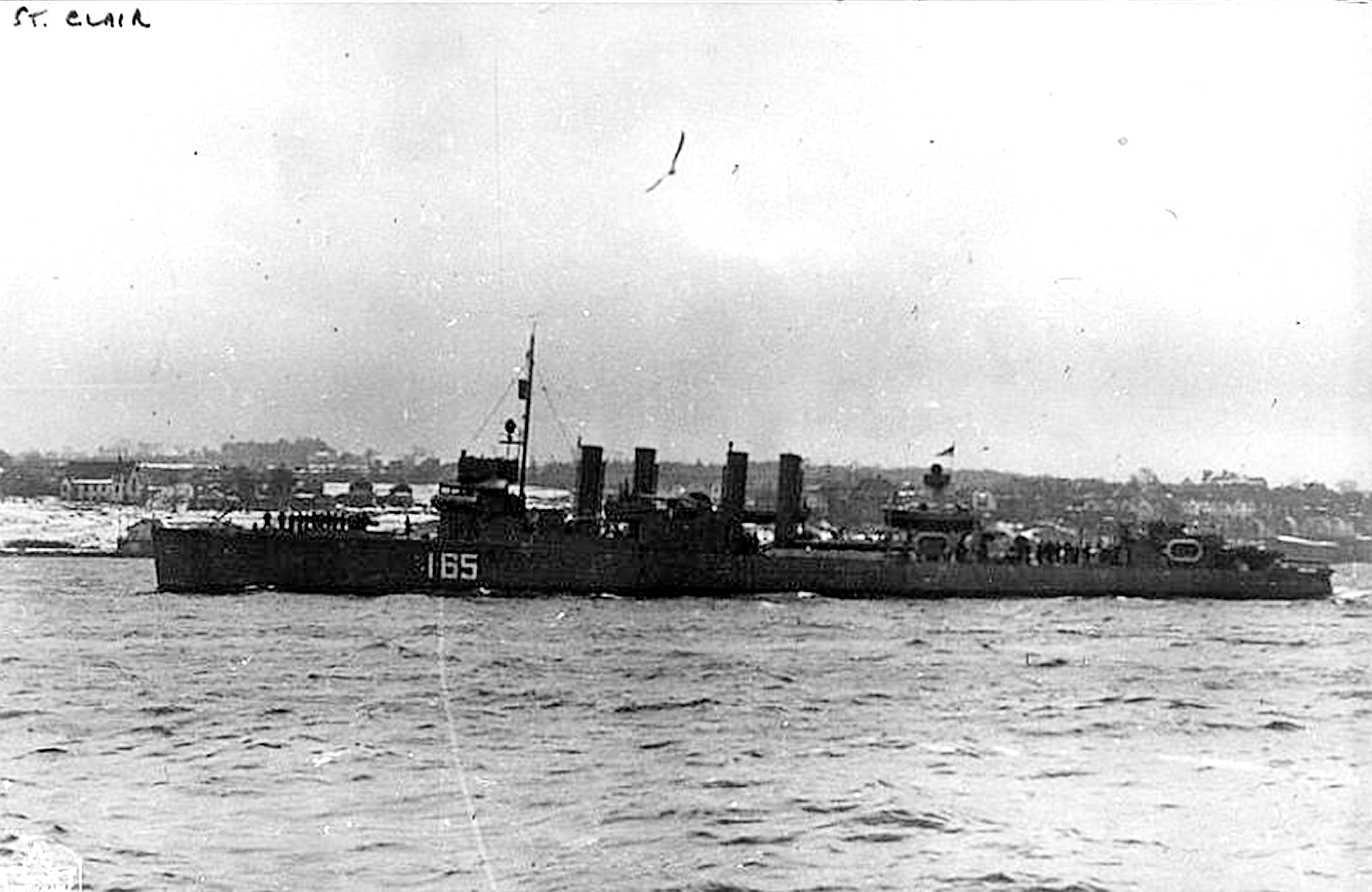The blue St. Clair River gave its name to “lend-lease” destroyer
Phil Egan
My father, Joe Egan, was always proud of his naval service in the Second World War.
His ship, HMCS Prince Rupert, a frigate, sank one of Germany’s deadliest sea wolves, the U-575 – nicknamed Lilliput. Dad often spoke of Prince Rupert’s wartime exploits.
But Prince Rupert wasn’t his first ship. Dad also served, briefly, aboard the HMCS Niagara – an aging four-stack destroyer. He rarely spoke about Niagara. I think he and his shipmates found “the old boat” a challenge to keep afloat.
At the outbreak of the Second World War, the United States was even more isolationist than it is today under President Donald Trump. The U.S. Neutrality Act forbade the sale of U.S. arms to enemy combatants of either side.
With France about to fall and the United Kingdom standing alone, Winston Churchill warned Franklin Roosevelt that, if Britain fell, the United States could face the prospect of German troops being stationed in British colonial possessions in the Caribbean, Bermuda and Newfoundland. This posed an immediate threat to America, particularly with U.S. Ambassador Joseph P. Kennedy describing British surrender as “inevitable.”
On Aug. 30, 1940, FDR approved an agreement that came to be known as “Lend Lease” – exchanging “surplus” U.S. war material for bases on British possessions in Bermuda, Newfoundland and the Caribbean. The deal sent 50 American First World War-era destroyers to Britain. Seven of them came to Canada.
In late September, there was great excitement on the shores of the St. Clair River at news the former USS William, built in 1907, would be renamed HMCS St. Clair.
The St. Clair would join other river-class warships in the fleet, such as St. Lauren, Restigouche, Fraser and others.
Built in San Francisco and launched on July 4, 1918, USS William was a Wicker-class destroyer. Her name had been suggested to Ottawa a year earlier by Homer Lockhart, secretary-treasurer of the Sarnia Chamber of Commerce. Lockhart had thought it appropriate to name future warships after Canada’s more famous rivers.
In August of 1940 a man named Lloyd Jennings, who lived at 173 Parker St. in Sarnia, resigned his position as first mate aboard the Great Lakes freighter Rammacher to join the Royal Canadian Navy Volunteer Reserve.
Jennings’ brother, Charles, was a member of the Sarnia Fire Department and another brother, Harry, was in England training with the 11th Field Company of the Royal Canadian Engineers.
So it became newsworthy when Jennings was named chief quartermaster of the “new” destroyer.
HMCS St. Clair, together with the minesweeper HMCS Sarnia, ensured this area was well represented on the high seas of wartime Canada.


